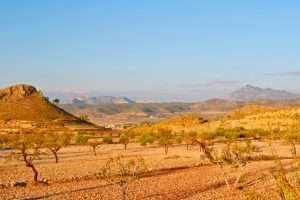Poetry Forms: Glosa

Colin Bedson, Public domain (https://www.publicdomainpictures.net/en/view-image.php?image=132754&picture=spanish-landscape)
The glosa or glose is known as a Spanish form, though I haven’t been able to find any information about its origins other than it being a medieval Spanish form. The basic rules are simple: take a quatrain (four lines) from another poem, and use each of those lines as the final line in a ten-line stanza. Meter often matches that of the original poem, but it doesn’t have to. Some sites suggest that there’s a rhyme scheme (that the 6th and 9th lines should rhyme with the 10th line), but others do not. (This is made more confusing by the example on the latter site, which does follow the rhyme scheme but doesn’t mention it as a rule.)
Because this poem form borrows from another poem, it’s a bit like a golden shovel poem. Much like that form, however, you can get interesting results by taking your poem in a very different direction from the original. It’s all in the lines you choose and how you make the rest of the lines work with or subvert them!
I’ve got my own glosa published in the WLYA 2019 anthology called “The Final Winter,” which is a glosa of Robert Frost’s “Nothing Gold Can Stay.”

Comments